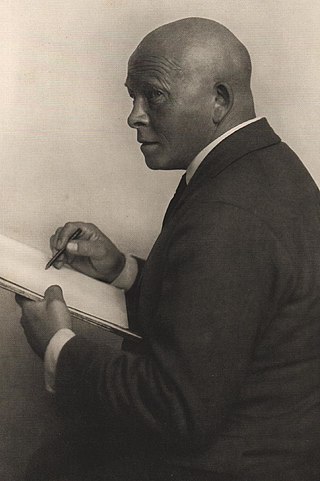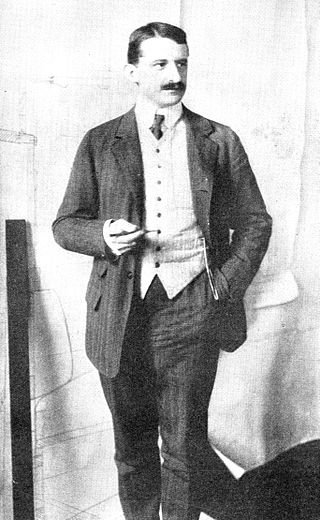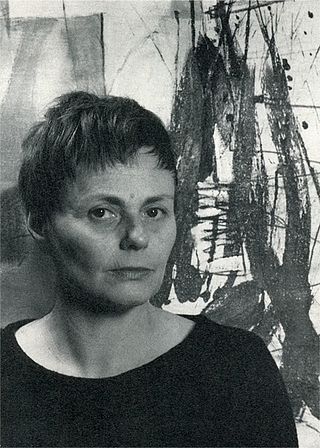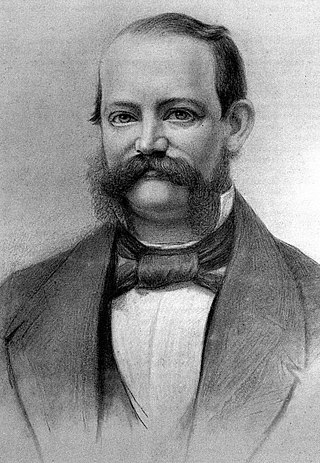
Rudolf Wilke (27 October 1873, Braunschweig - 4 November 1908, Braunschweig) was a German caricaturist and illustrator; best known for his work at the satirical magazine, Simplicissimus .

Rudolf Wilke (27 October 1873, Braunschweig - 4 November 1908, Braunschweig) was a German caricaturist and illustrator; best known for his work at the satirical magazine, Simplicissimus .
He was the eldest child of Johannes Wilke, a carpenter. Two of his younger brothers also became artists; Hermann , who was a painter and commercial artist, and Erich , who was also a caricaturist.
After serving an artisanal apprenticeship, he attended the building trades school in Holzminden. His artistic inclinations led him in another direction, however, and he took lessons from the landscape painter, Adolf Nickol, at the polytechnic academy in Braunschweig. This was followed by studies at a private drawing school in Munich, and the Académie Julien in Paris.
He decided to settle in Munich, and opened a studio with his friend, the architect Bruno Paul. In 1896, he took part in a competition sponsored by the cultural magazine, Jugend , and was chosen to join their staff. Three years later, the publisher Albert Langen invited him to work at Simplicissimus. [1]
In 1905 he married Amalie Mally , who was also an illustrator. They had two children; Charlotte , who became an artist, and Ulfert, who emigrated to the United States and became a museum director.. [2]
In 1906 Wilke, along with Olaf Gulbransson, Ludwig Thoma, and Eduard Thöny, persuaded Langen to convert Simplicissimus into a joint stock company, thereby giving more power to the staff to control the journal's direction.
From 1954 to 1993, the city of Braunschweig awarded a "Rudolf Wilke Prize", which included 1,500 Marks for a study trip abroad. [3] Its first recipient was the graphic artist, Karl-Heinz Meyer . In 1964, a street in Munich's Solln district was named after Wilke.

Jugendstil was an artistic movement, particularly in the decorative arts, that was influential primarily in Germany and elsewhere in Europe to a lesser extent from about 1895 until about 1910. It was the German counterpart of Art Nouveau. The members of the movement were reacting against the historicism and neo-classicism of the official art and architecture academies. It took its name from the art journal Jugend, founded by the German artist Georg Hirth. It was especially active in the graphic arts and interior decoration.

Simplicissimus was a satirical German weekly magazine, headquartered in Munich, and founded by Albert Langen in April 1896. It continued publishing until 1967, interrupted by a hiatus from 1944–1954, and became a biweekly in 1964. It took its name from the protagonist of Grimmelshausen's 1668 novel Der Abenteuerliche Simplicissimus Teutsch.

Heinrich Kley was a German illustrator, editorial illustrator and painter.

Olaf Leonhard Gulbransson was a Norwegian artist, painter and designer. He is probably best known for his caricatures and illustrations.

Bruno Paul was a German architect, illustrator, interior designer, and furniture designer.

Eugen Gustav Dücker was a Baltic German painter, in the Romantic atyle, associated with the Düsseldorfer Malerschule.
Ulfert Wilke (1907–1987) was an internationally recognized painter, museum director and art collector connected to the abstract expressionism movement. His father, Rudolf Wilke, was an illustrator for the satirical magazine, Simplicissimus.

Eduard Thöny was a German caricaturist and illustrator known for his work for the journal Simplicissimus, to which he was invited to contribute by Albert Langen. Born in Brixen, he studied at the arts academy in Munich. His work for Simplicissimus included more than 2,500 pages of cartoons used to lampoon German society and the military. Thöny's drawings would appear in the journal until it ceased publication in 1944.

Ferdinand Freiherr von Řezníček was an Austrian painter, illustrator, and graphic artist.

Friedrich Georg Weitsch was a German painter and etcher.

Paul Flora was an Austrian caricaturist, graphic artist, and illustrator, known for his black ink line drawings. "Flora was one of Europe's most profiled illustrators since the 1960s. He worked for British newspapers The Times and The Observer as well as for Germany's Die Zeit".

Albert Langen was a German publisher and founder of the satirical publication Simplicissimus.

Irma Hünerfauth, also known as IRMAnipulations was a German painter, sculptor and object artist who turned junkyard scrap into sculptures, machines and kinetic art objects that mocked consumer society. She opposed traditional academic art, rebelled against academism and followed radical contemporary art trends in post-war Germany. Through her work she is related with the concept of artists from the post-war modernity as well as the Nouveau Réalisme group of artists, such as Niki de Saint-Phalle, Jean Tinguely, Arman as well as Daniel Spoerri.

Rudolf Köselitz was a German painter and Illustrator.

Muthesius Academy of Art is an art school and is located in the city of Kiel in Schleswig-Holstein, Germany. The school was named for architect Hermann Muthesius. The school was founded in 1907 as an Arts and Crafts (movement) and handicraft school, the current version of the school including the name and art school status started in 2005.
Clemens Jöckle was a German art historian. From 2001 to 2012, he was the director of the Städtische Galerie Speyer.

Carl Strathmann was a German painter in the Art Nouveau and Symbolist styles.

Max Eduard Giese was a German landscape and cityscape painter, associated with the Düsseldorfer Malerschule.

Johann Heinrich Höfer was a German landscape and portrait painter.

Adolf Karl Friedrich Nickol, originally Nickel was a German landscape and animal painter.